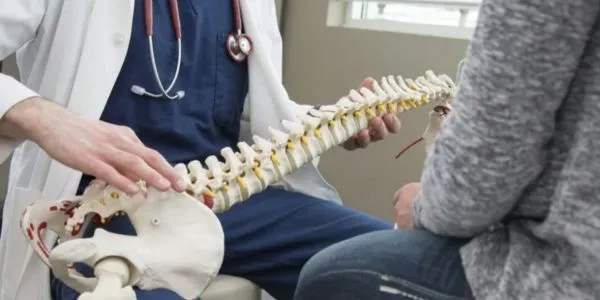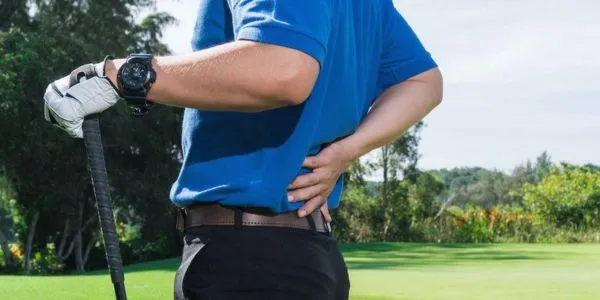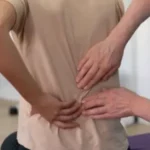Athletes push their bodies to achieve top performance, but this drive often puts their spine at risk. Spine health and injuries in sports are serious issues for athletes in any field, whether they play or compete at the highest levels. Recognizing these dangers and knowing when to consult the best spine doctor in Delhi could mean the difference between healing well or facing enduring problems.
The spine acts as the backbone of athletic movement enabling every twist and turn that athletes rely on in competition. Injuries to it can keep athletes out of action for weeks or months and sometimes even end careers altogether. This shows why learning about spine health matters so much to people involved in sports.
Understanding Sports Injuries Spine Health in Athletes
Athletes can develop spinal injuries from sudden accidents or from the strain of repeated motions wearing down structures over time. The spine’s design, with all its vertebrae, discs, nerves, and ligaments working together, leaves it open to damage from the pressures of sports.
Playing contact sports like football, rugby, and hockey comes with clear dangers from hits and collisions. But even in non-contact sports like gymnastics, tennis, and golf, there are serious risks. Repeated twisting motions and overstretching can lead to injuries in these activities. Many athletes from different sports seek help from the best spine doctor for back pain showing how each sport carries its own unique injury risks.
Studies show that 10-15 percent of sports injuries involve the spine, with the lower back being the most affected area. These numbers highlight how crucial it is to prevent injuries and learn about treatment choices offered at the best spine treatment hospital in Delhi.
The way athletes move during sports puts a lot of strain on the spine. High-impact actions create forces that can be several times greater than body weight. These forces put pressure on the spine that may go beyond what it handles to protect itself. When stress is mixed with tiredness and bad technique, it increases the chances of getting injured.
Common Types of Spinal Injuries in Sports
Sports-related spine injuries show up in different ways, and each one needs specific care and understanding. One of the most common problems athletes face is herniated discs. This happens when the soft center of an intervertebral disc pushes through its tougher outer layer. Athletes often mention feeling sharp pain that spreads to their arms or legs depending on where the disc issue is located.

Stress fractures like spondylolysis often affect athletes who overextend their backs during sports. Gymnasts, divers, and football linemen tend to face these injuries more often. Athletes might notice disc issues starting with mild stiffness that gets worse as time goes on.
Spinal stenosis, though it happens in older athletes, can also develop in younger ones with repeated minor injuries. This happens when the spinal canal narrows, which can press on nerves and lead to discomfort, tingling, or weakness in the arms or legs.
Serious Sports Spine Injuries often involve traumatic events like fractures or dislocations. High-energy impacts cause these, and they need quick medical care to avoid long-term nerve damage.
Risk Factors and Causes of Spinal Injuries in Sports
To prevent spinal injuries in sports, athletes and coaches need to understand their causes. Poor conditioning stands out as a major risk. Weak core muscles fail to support the spine during physical activity. The core muscles work like a protective shield. They spread out force and help guard spinal structures from too much strain.
Poor technique is a big reason why injuries happen. When athletes focus on performance over proper form, they often put their spines in dangerous positions. This makes them prone to sudden injuries and long-term damage. Athletes need solid coaching and regular practice to improve their form throughout their careers.
The type and condition of equipment matter a lot when it comes to staying safe. Gear that doesn’t fit right shoes that are too worn, or using the wrong tools for certain sports can mess up body mechanics and lead to injuries. Athletes need to check and replace their equipment as a basic safety rule.
The environment where athletes play also affects injury risks. Hard or uneven surfaces can cause more impact on the spine, while wet or slippery areas can lead to people falling or losing balance.
Prevention Strategies for Sports Spine Injuries
To stop Sports Spine Injuries, athletes need several things like good training, better skills, and knowing how injuries happen. Building core strength is the first step in protecting the spine. Exercises should focus on improving both stability and movement control. Athletes need to work on deep muscles like the transverse abdominis, multifidus, and pelvic floor.
Stretching is just as important because stiff muscles can mess with how the spine moves and raise the chances of getting hurt. Tight hip flexors can lead to a spine that curves too much and put extra strain on the lower back. Stretching often should include all the big muscle groups that help with spine movement and alignment.
To get the spine ready for sports activities proper warm-ups boost tissue temperature, improve blood circulation, and activate neuromuscular systems. Dynamic stretching or movement exercises that copy sport actions work best to prepare the body for practice or competitions.
Managing training loads plays a vital role in preventing injuries but often gets ignored. Athletes and their coaches should adjust training intensity and give enough rest to help tissues recover and strengthen. Quick spikes in workout volume or intensity can raise the chance of injuries.
Treatment Options for Spine Problems
When injuries happen after prevention doesn’t work, getting expert medical attention becomes crucial. In Delhi, Sant Paramanand Hospital is regarded as the top hospital for spine care. They provide all kinds of treatment, from basic care to advanced surgery.
The first step to address most Sports Spine Injuries involves conservative methods. Physical therapy helps people regain normal movement and build stronger supporting muscles under the guidance of trained specialists. Pain relief can come from using anti-inflammatory medicines or specific injections, which allow the body to heal .
Leading centers also offer modern non-surgical treatments like stem cell therapy and platelet-rich plasma therapy. These treatments use the body’s natural healing properties to speed up recovery and, in some cases, repair damaged tissues.
When basic treatments fail to work, surgery might be the next option. Surgeons now use modern techniques that involve small incisions and cause less damage to tissues. These methods help patients heal faster. The top spine doctor in Delhi uses these methods to help athletes get back to their games and .
Sports Spine Injury Statistics
| Injury Type | Percentage of Sports Injuries | Common Sports | Recovery Time |
| Herniated Disc | 35% | Tennis, Golf, Football | 6-12 weeks |
| Muscle Strain | 28% | All Sports | 2-6 weeks |
| Stress Fracture | 15% | Gymnastics, Diving | 8-16 weeks |
| Spinal Stenosis | 12% | Contact Sports | Variable |
| Acute Fracture | 10% | High-impact Sports | 12-24 weeks |
Case Study: Successful Recovery from Sports Spine Injury
Rajesh Kumar, a 28-year-old cricketer from Delhi, felt sharp lower back pain during a match. The pain spread to his left leg. He tried resting and using over-the-counter medicine, but they helped very little. When he met specialists at Sant Paramanand Hospital, an MRI scan showed he had a herniated disc at the L4-L5 level.
Doctors started his treatment with non-surgical methods. They used focused physical therapy and gave him epidural steroid injections. In just six weeks, his pain eased a lot, and his movement got better. A tailored rehab program worked on strengthening his core and practicing cricket-specific actions to get him ready to play again.
Three months after his injury, Mr. Kumar played competitive cricket again without any limitations. His story shows how early action and well-rounded treatment plans offered by expert spine care centers in Delhi NCR can help athletes get back on track.
Spotting symptoms, getting a quick medical check-up, and sticking to the treatment plan played a big role in his recovery. His journey reminds us why it’s crucial to consult skilled specialists who understand the physical challenges sports bring.
Frequently Asked Questions
Q: When should athletes see a doctor for back pain?
A: Athletes need to visit a doctor if back pain lasts more than two to three days, causes leg numbness or weakness, or affects daily life or sports performance.
Q: Can spine injuries stop an athlete’s career?
A: Serious spine injuries might put careers at risk, but many athletes do make comebacks with the right care and rehab. Getting treatment and having skilled medical help makes a big difference.
Q: How long does it take to heal from a herniated disc?
A: Healing time depends on how bad the injury is and the type of treatment used. Non-surgical methods take 6 to 12 weeks, but surgeries might take between 3 and 6 months to recover.
Q: What are the warning signs of disc degeneration?
A: Morning stiffness and back pain that gets worse when you sit or bend forward are early signs to watch for. Back pain that spreads to your legs over time can also be a red flag and may indicate a sign of disc degeneration. Persistent symptoms should lead you to seek medical advice.
Q: Is surgery always necessary for sports spine injuries?
A: Surgery is not needed. Most spine injuries related to sports improve with non-surgical treatments. Doctors tend to recommend surgery when there are nerve problems, intense pain that does not improve with basic care, or if the spine becomes unstable.
Conclusion
Sports injuries and spine health play a big role in athletic medicine. Athletes, coaches, and healthcare providers need to pay attention to this area. Athletes can lower the risk of spinal injuries by knowing the dangers using smart prevention methods, and reaching out to experts when necessary. This helps them stay in the game longer and perform well.
Athletes in Delhi NCR can rely on world-class treatment available at places like Sant Paramanand Hospital. These facilities combine cutting-edge medical tools with skilled specialists. This gives athletes the chance to heal and return to their sports.
Spine health plays a big role in ensuring you stay active in sports in the long run. Treat preventive steps as important, pay attention to the warning signs your body gives, and reach out to a specialist if necessary. Your spine is key to everything you do in sports so give it the care it needs.




